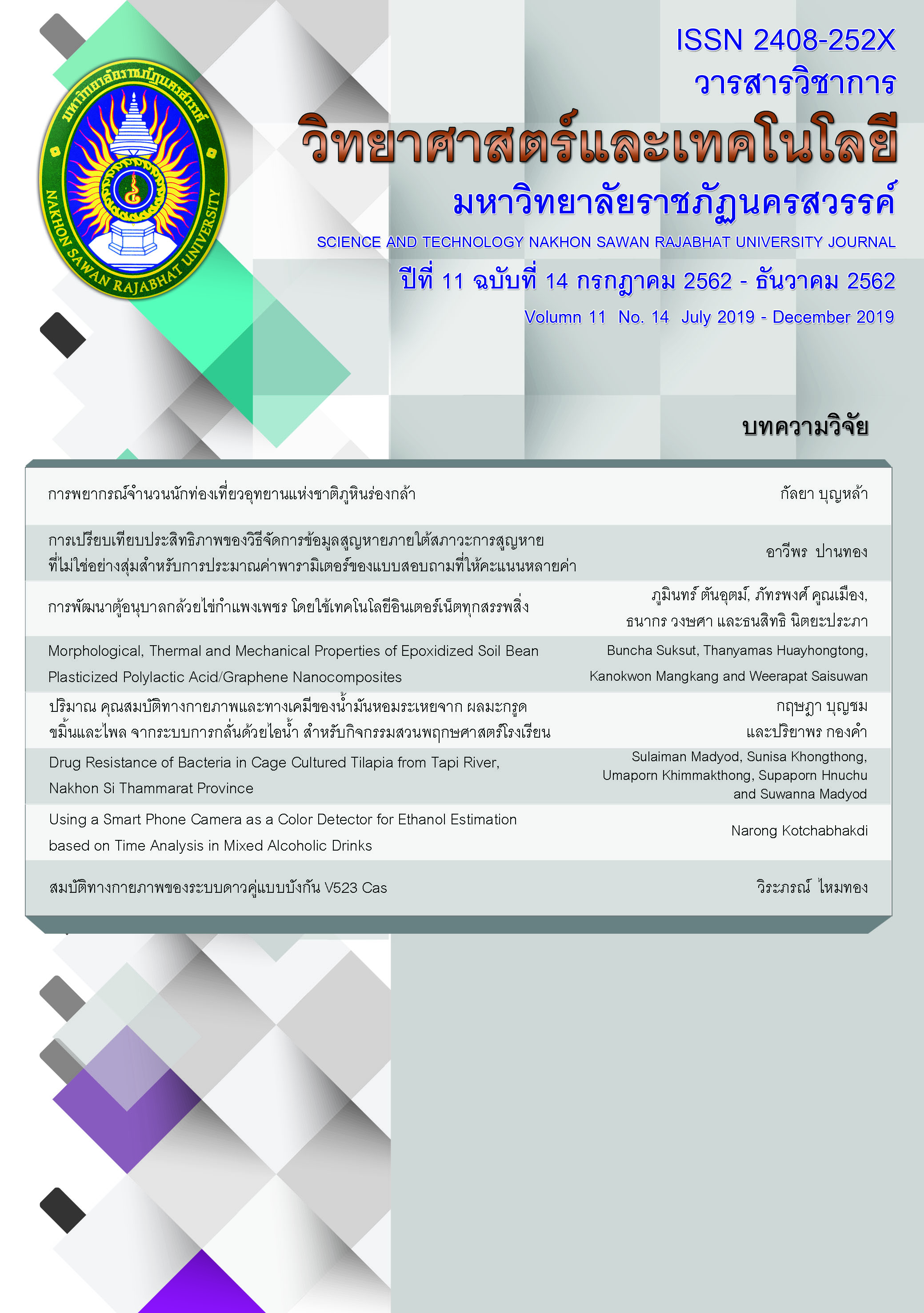การเปรียบเทียบประสิทธิภาพของวิธีจัดการข้อมูลสูญหายภายใต้สภาวะการสูญหายที่ไม่ใช่อย่างสุ่มสำหรับการประมาณค่าพารามิเตอร์ของแบบสอบถามที่ให้คะแนนหลายค่า
Keywords:
Expectation maximization algorithm, Maximum likelihood estimation, Missing DataAbstract
The purposes of this research were to: 1) analyze the item parameters of primary data and parameters from the treatment of the missing data with EM and ML of polytomous scored items. And 2) to compare the quality of the two treatment methods of missing data from polytomous scored items. The study was conducted by primary data from polytomous scored items. The research findings were as follows : 1) The results of the analysis of the item parameters by using EM and ML revealed that within the missing not at random (MNAR), it is found that the discriminant parameters (aj) obtained from the two methods of estimation were similar and the estimated value of that was higher than the actual value. Although the obtained value on the threshold of the test (bjk) was greater than the actual value, the examinee’s ability parameter (q) under MNAR estimated by using EM was actual than that obtained by using ML. 2) According to the comparison of the quality of the two treatment methods of missing data for estimation of the item parameters and examinee’s ability, found that there was no significant difference either in the item parameters or in the examinee’s ability estimation under the conditions of missing at random. The ML method yielded the smallest values of the MAPE and RMSE when estimating discriminant threshold and examinee’s ability.
References
Enders, C.K. (2010). Applied missing data analysis. New York: Guilford Press.
Finch, H. (2008). Estimation of item response theory parameters in the presence of missing data. Journal of Educational Measurement 45, 225-245.
Olinsky, A., Chen, S. & Harlow, L. (2003). The comparative efficacy of imputation methods for missing data in structural equation modeling. European Journal of Operational Research 151, 53–79.
Robitzsch, A. & Rupp, A.A. (2009). Impact of missing data on the detection of differential item functioning the case of Mantel-Haenszel and logistic regression analysis. Educational and Psychological Measurement 69 (1), 18-34.
Schmitt, P., Mandel, J. & Guedj, M. (2015). A comparison of six methods for missing data imputation. Journal of Biometrics & Biostatistics 6 (1), 1-6.
Schafer, J.L. & Graham, J.W. (2002). Missing data: Our view of the state of the art. Psychological Methods 7 (2), 147-177.
Sijtsma, K., & Van der Ark, L. A. (2003). Investigation and treatment of missing item scores in test and questionnaire data. Multivariate Behavioral Research 38, 505–528.



